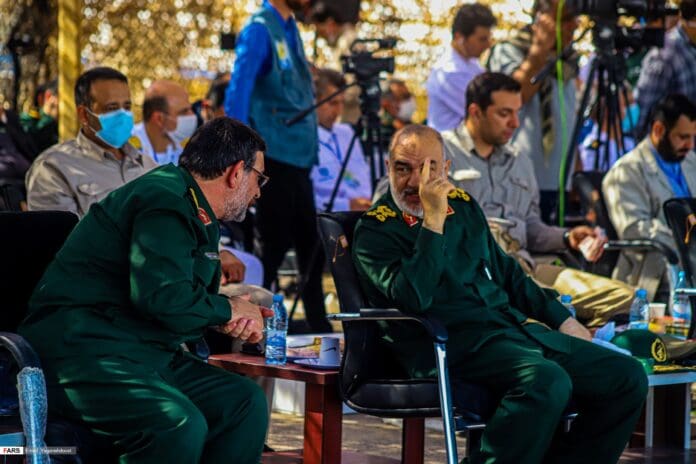This post is also available in:
 עברית (Hebrew)
עברית (Hebrew)
Iran’s Revolutionary Guards recently tested AI-equipped missiles during military exercises in the Persian Gulf, which, is true, could mark a significant development in the country’s missile capabilities. The drills, which took place in late January in southwestern Iran, featured the launch of Ghaem and Almas precision-guided missiles from Mohajer-6 and Ababil-5 drones. According to state media reports, the AI-powered missiles successfully struck simulated enemy targets, showcasing the integration of this technology into Iran’s military strategy.
The military drills were held in Bushehr and Khuzestan provinces, home to critical infrastructure, including Iran’s nuclear power plant in Bushehr, as well as vital oil and petrochemical facilities. These exercises were designed to simulate the protection of these key assets, which are considered highly sensitive from both a strategic and economic standpoint.
Alireza Tangsiri, the Commander of the IRGC Navy, underscored the importance of these drills in safeguarding Iran’s essential infrastructure. He also revealed that the country is producing cruise missiles with ranges exceeding 1,000 kilometers, all of which are powered by AI technology. This development signals a significant leap in Iran’s military capabilities, using AI to improve missile accuracy, targeting precision, and overall performance.
Specific details about the particular AI technology used in these missiles have yet to be revealed. However, as AI becomes a component of Iran’s defense strategy, the country’s missile and drone programs are garnering attention, especially amid growing tensions with the U.S. and Israel. The use of artificial intelligence in missile technology is altering the dynamics of regional security, with the potential to shift military power balances. As Iran continues to advance its missile development, the strategic implications for the geopolitical landscape remain unknown.


























